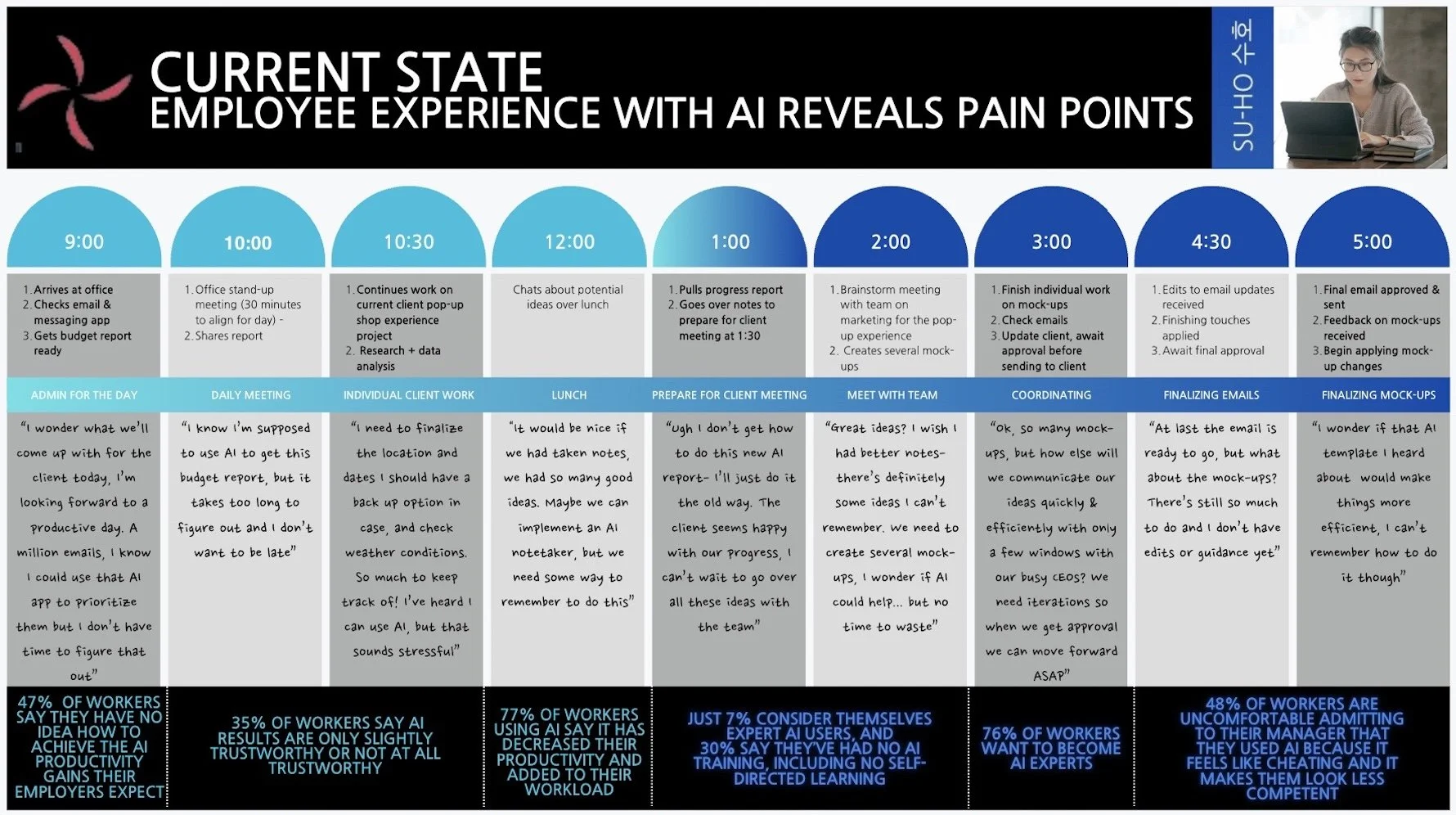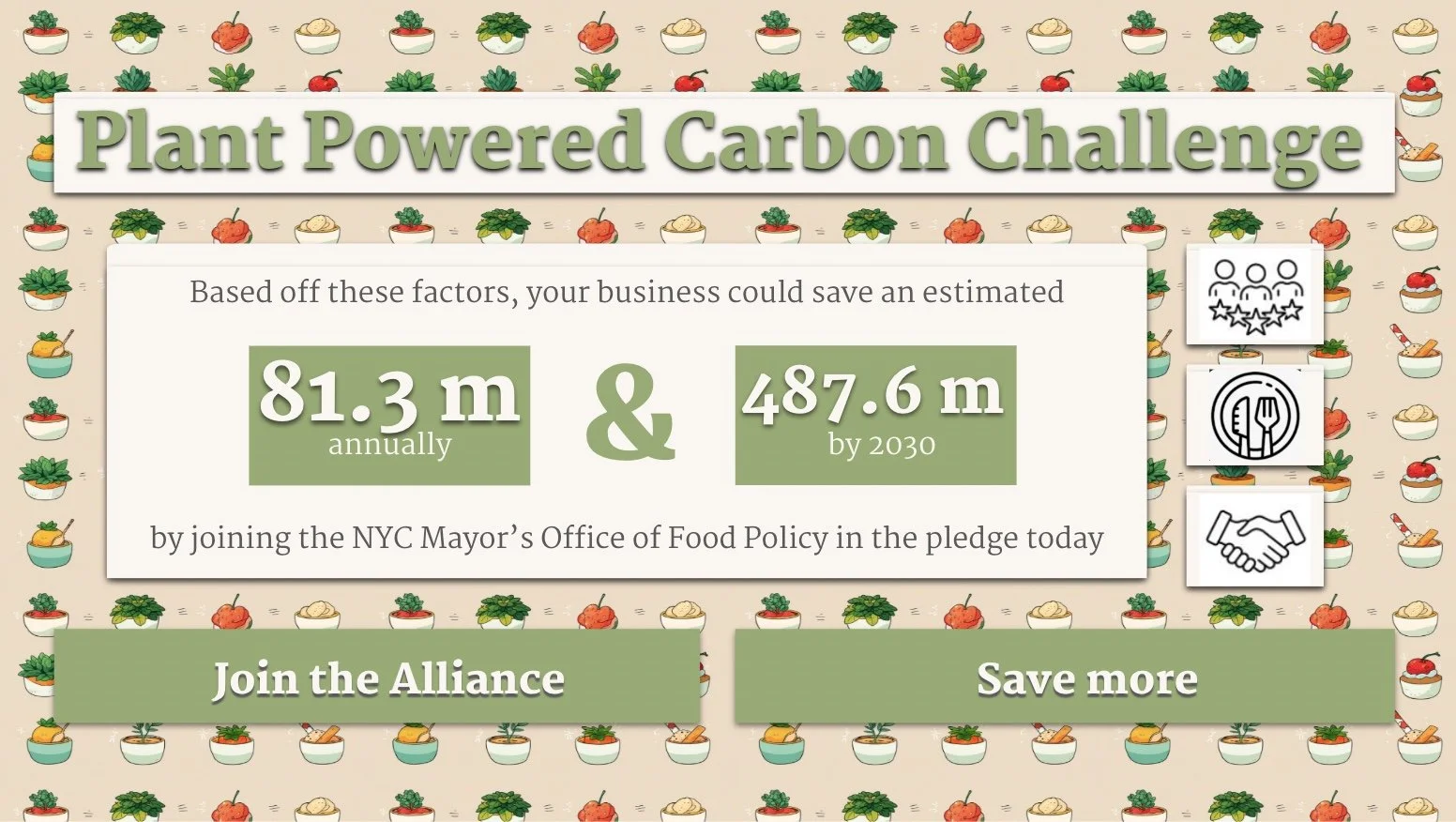Sample Design Projects
During this particular project, my team worked with a Korean luxury digital marketing firm focused on taking their technological prowess to the next level during the current rapidly changing innovative environment. We started with empathy: researching everything from the company, Asiance, itself to learning as much as we could about the culture of Korea. After these findings, it was clear to see that the company could thrive even more if we could find a way to take the excitement for their technological expertise they give their clients and apply it to their internal processes.
From here, we moved on to defining the question we’d tackle: “how might Asiance unlock internal efficiencies to catalyze human innovation and creativity for a sustainable business?” The forefront of technology buzzing around everyone’s minds, including our client’s, is Artificial Intelligence. Diving into this research, we found that utilizing AI in the workplace could lead to anywhere from a 17% to 43% productivity increase. However, we also found that 47% of workers felt they had no idea how to achieve the bump to productivity through AI that their employer expected, and on top of that 77% of workers actually felt that AI added to their workload. Through the rest of the design process, we found that the deliverable our client would receive the most benefit from was a change management process that addressed the pain points employees would feel during this process and instead allow AI to augment the creativity of the employees while relieving their monotonous daily tasks. We also focused on ensuring that the deliverable we handed over would maintain privacy and data confidentiality while keeping open source in order to keep in-house costs manageable.
One of Asiance’s big clients is Kakao, a Korean technology mogul. While this product made it only so far as to the drawing board of brainstorming during our initial research into the company, this product showcases a fully original design tool I created for our team’s findings. This empathy worksheet combines Kakao’s cute cultural phenomena aesthetic with Asiance’s thoughtful marketing mapping to create a space for ideation that leads to an understanding of how the two companies could best collaborate and feed into eachother’s strengths.
The “key” to the left outlines how to use the empathy map, while Kakao’s most popular character mascot, Ryan the lion looks on. Each silhouette takes a page out of Kakao’s branding aesthetic: KakaoTalk’s conversation bubble and the cute heart add to the homage to Ryan. There’s three columns, two to research into each companies’ individual goals, what they do, who their customers are, and their customer’s wants and needs. The middle column is the third step, a easy way to combine the individual companies strengths together by visualizing them side by side in a clean layout. The bottom color-coordinates to each step, leaving space for notes or questions that come up throughout the process. Asiance’s logo tops the page to finish off the in-house branding collaboration.
Our teams’ project with the New York City Mayor’s Office of Food Policy tackled ways to expand the Plant Powered Carbon Challenge initiative. The initiative itself is a voluntary initiative led by private, institutional, and non-profit sectors in partnership with the NYC Office of Food Policy to draw down carbon emissions and build a more sustainable food system in New York City. Participants commit to a 25% reduction in food-based carbon emissions by the year 2030 through plant-forward food procurement.
Things we really focused on working with this initiative was taking into account the needs of the limited staff in the Office of Food Policy, and understanding their limitations when dealing within the confines of the compartmentalized government system. While the office staffing may have been small, the hearts and the work of the employees were big. Through our meetings with them and research into their needs, we were able to zero into the challenge of how to draw in large businesses whose values may not be already aligned with the challenge.
Through diving into research, surveys, and interviews, we were able to come up with multiple prototypes as potential deliverables for the Office of Food Policy to implement, giving large impact on a low touch basis. Pictured is a sample of one of these prototypes, a calculator that could show businesses how much capital they could save if they joined the initiative based off an algorithm that accounted for potential fees incurred by similar legislation in Europe that was headed for the United States at the time, legislation that already exists in the US, and other savings based on the type of business such as a restaurant or a corporate company.
During this project, our team created and lead a team building exercise for a UX team out of Siemens India. This exercise’s bones were built with an influence of the concepts outlined in the book “Play” by Dr. Stuart Brown grounded in neurological research: learning is built by play. Our cultural research of India revealed a strong affinity for the game charades, so we wanted to do it with a twist that would not only build team camaraderie, but also develop a chance to apply the communication limitations to their day to day challenges during a work project. On our end, the challenge was made even more interesting by the fact that the exercise, a game usually played in person, would be taking place over Zoom. We ran several test concepts before the final event, integrating feedback that culminated into a smoothly-ran workshop.








